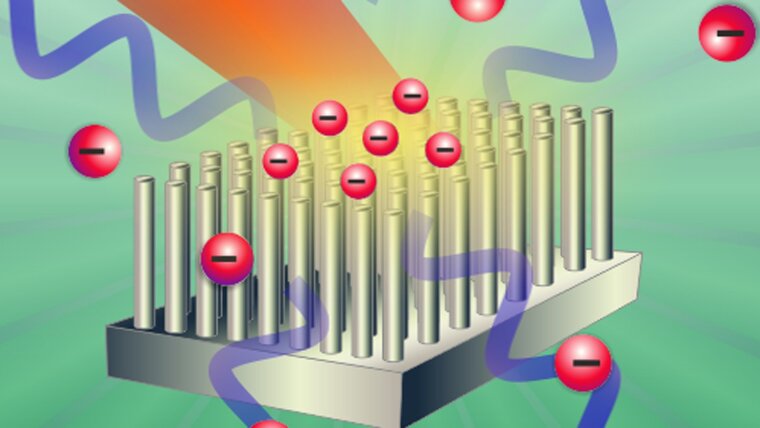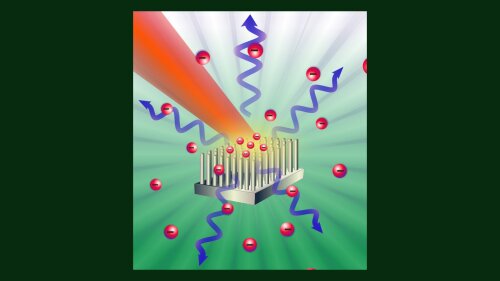

The scope of our research is strong-field interaction with nanoscale objects. To be more specific we want to realize plasma-based X-ray and particle sources driven by small-scale high-power laser systems enabling new scientific applications. However, one of the main fundamental problems is the limited laser energy absorption of a plasma. Once plasma has reached the critical density, it starts to screen underlying material, so that laser pulse stops to penetrate inside and can heat only the top layer. To tackle this issue, we science relativistic nanophotonics by laser-nanostructure interaction using relativistically ultra-intense and ultra-short laser pulses. Thanks to the advances in nanotechnology which allows us the smart target nanostructuring we aim to improve the efficiency of laser-based radiation sources (like X-rays, electrons, and ions) enabling new scientific and industrial applications. Generation of plasmas with nanostructured solid targets with ultra-intense femtosecond laser pulses as well as study of their evolution is of great importance for fundamental studies of matter under extreme conditions and for the problem of designing highly efficient radiation sources.
Over the past several years our group has performed a number of experimental investigations of X-ray emissions produced under relativistic laser-matter interaction. Close cooperation with our colleagues from X-ray Physics group (XRO, IOQ, FSU Jena) and from GSI (Darmstadt)Externer Link allow us to develop a complex of feasible diagnostic tools. We observe very efficient laser energy absorption close to 100%, electron densities of at least tens of critical densities with keV temperatures and, as a result, a huge X-ray flux enhancement. We have also witnessed an influence of the target morphology on production of charged particles (electrons, ions), which is worth further investigation. We collaborate with the Institute of Solid State Physics in FSU (Prof. Ronning), and with the Institute of Applied PhysicsExterner Link (Prof. Zeitner), who provide us with nanostructured targets of different materials, dimensions, and morphologies above all high aspect ratio vertically orientated nanowires (via E-beam lithography). Furthermore, having an access to several laser systems of millijoule and joule energy level laser systems within the institute like JETI-40Externer Link and JETI-200 along with possibility to use OPCPA (up to 30 mJ, 90 fs, @3.9 µm) in TU Vienna (Prof. Baltuška)Externer Link we are capable of performing experiments in fundamentally different regimes of interaction.
List of research publications:
1. Eftekhari-Zadeh, Ehsan, et al. "Complex diagnostic and numerical study of X-ray and particle emissions under relativistic ultra-short laser-solid interaction." Physica Scripta 98 (2023) 115615. https://doi.org/10.1088/1402-4896/acff8cExterner Link
2. Eftekhari-Zadeh, Ehsan, et al. "Nanosecond Living Hot and Dense Plasma and High Energy Particles from Relativistic Laser-Nanowire Interaction." Compact EUV & X-ray Light Sources. Optica Publishing Group, paper JTh6A.1, 2022. https://doi.org/10.1364/EUVXRAY.2022.JTh6A.1Externer Link
3. Eftekhari-Zadeh, E., et al. "Laser energy absorption and x-ray generation in nanowire arrays irradiated by relativistically intense ultra-high contrast femtosecond laser pulses." Physics of Plasmas 29.1 (2022). https://doi.org/10.1063/5.0064364Externer Link
4. Samsonova, Zhanna, et al. "Relativistic interaction of long-wavelength ultrashort laser pulses with nanowires." Physical Review X 9.2 (2019): 021029. https://link.aps.org/doi/10.1103/PhysRevX.9.021029Externer Link
5. Samsonova, Zhanna, et al. "Hard x-ray generation from ZnO nanowire targets in a non-relativistic regime of laser-solid interactions." Applied Sciences 8.10 (2018): 1728. https://doi.org/10.3390/app8101728Externer Link
6. Samsonova, Z., et al. "X-ray emission generated by laser-produced plasmas from dielectric nanostructured targets." AIP Conference Proceedings. Vol. 1811. No. 1. AIP Publishing, 2017. https://doi.org/10.1063/1.4975743Externer Link
